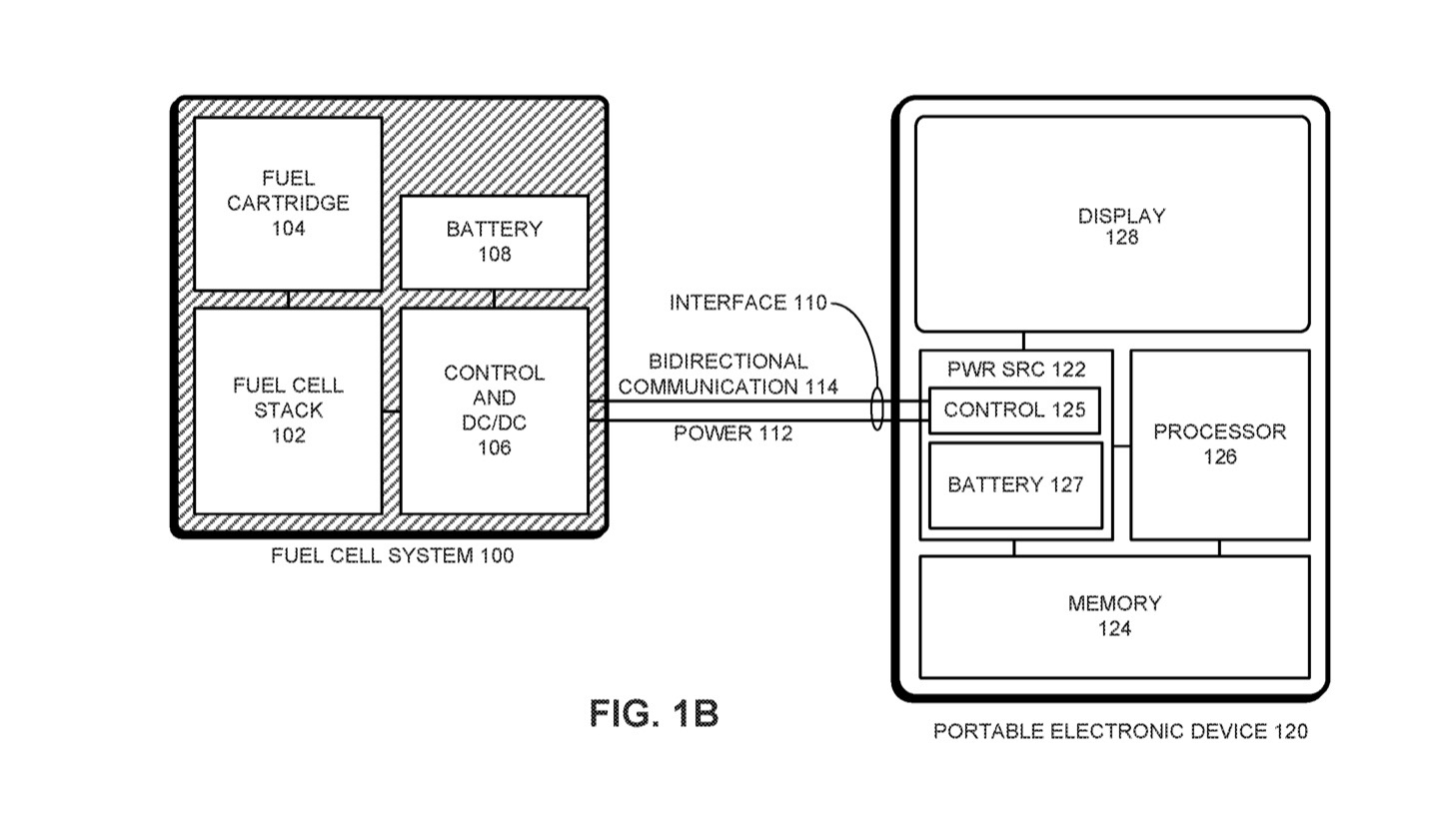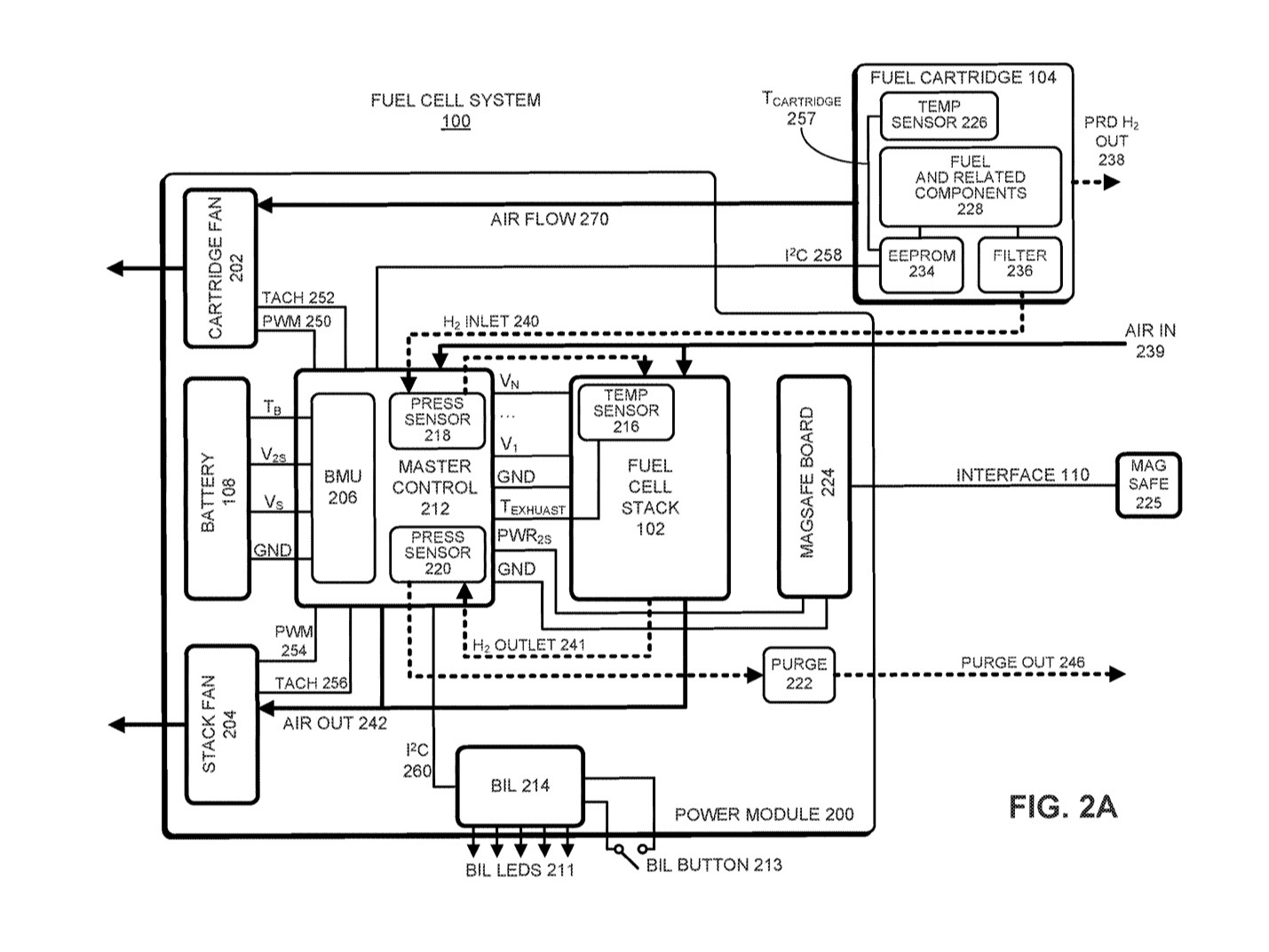Gas up your Mac: Apple patents hydrogen fuel cells for MacBooks and iPads
Apple could get even more green with an iHydrogen portable charger – but it's just a patent for now

Apple has patented a truly bold strategy for improving the battery life in its devices: a portable and cost-effective fuel cell system that converts fuel into electrical power.
Specifically, Apple wants to use "proton exchange membrane (PEM) fuel cells" that convert hydrogen into electricity. The patent predicts that these cells could power a computer for "days or even weeks without refueling".
The challenge, as the patent itself admits, is to make this fuel source portable and cost-effective, compared to simply continuing to plug your computer into an outlet. Apple Insider first spotted the patent.
- Apple also patented retractable keyboards,
- a foldable iPhone or iPad,
- and an iPhone you wear on your face
Apple explains its political motivations for finding alternative fuel sources in the patent: "Our country's continuing reliance on fossil fuels has forced our government to maintain complicated political and military relationships with unstable governments in the Middle East, and has also exposed our coastlines and our citizens to the associated hazards of offshore drilling", it reads.
The Apple patent document is credited to a group of inventors who originally claimed this idea in 2010, then again in 2015. Apple's patent has superseded these – clearly indicating it bought the invention from the original team — but it's highly unlikely that this concept is anywhere close to being implemented in upcoming Apple devices.



How it could work
Apple has largely left its magnetic MagSafe connector behind in recent years, but the patent images indicate that the company could return to the technology if it indeed makes a portable hydrogen charger.
It could also choose to forego hydrogen for another fuel source entirely. The patent speculates that it could rely on "solid oxide fuel cells, molten carbonate fuel cells, direct methanol fuel cells, alkaline fuel cells, and/or other types of fuel cells".
Get daily insight, inspiration and deals in your inbox
Sign up for breaking news, reviews, opinion, top tech deals, and more.
Assuming Apple does stick with hydrogen, the fuel cells could acquire the chemical from different sources. Tanks of compressed hydrogen could be dangerous, so the company could rely on thermolysis, or water splitting: using extremely hot temperatures (500°–2,000°C), water is split into oxygen and hydrogen atoms. Or, they could choose electrolysis, which uses electricity to split water molecules instead.
Interestingly, the patent notes that the process of converting hydrogen to electricity could create water as a waste product. So the device would have to find a way to expel or evaporate the water while fueling your devices.
If and when this concept comes into play, another Apple patent for Apple Watches detecting harmful gases could end up being useful in an emergency.
Michael Hicks began his freelance writing career with TechRadar in 2016, covering emerging tech like VR and self-driving cars. Nowadays, he works as a staff editor for Android Central, but still writes occasional TR reviews, how-tos and explainers on phones, tablets, smart home devices, and other tech.
